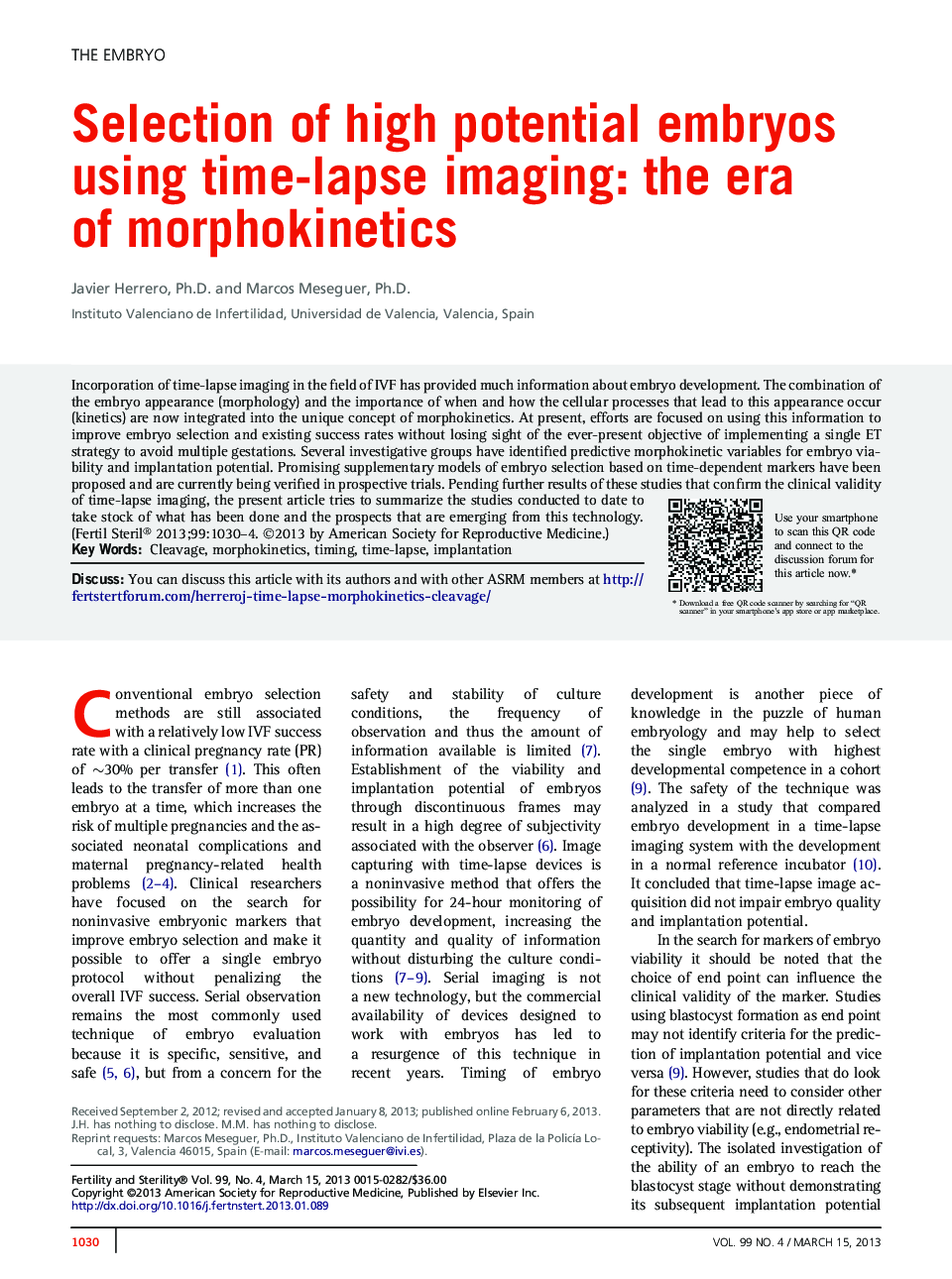| Article ID | Journal | Published Year | Pages | File Type |
|---|---|---|---|---|
| 3939104 | Fertility and Sterility | 2013 | 5 Pages |
Incorporation of time-lapse imaging in the field of IVF has provided much information about embryo development. The combination of the embryo appearance (morphology) and the importance of when and how the cellular processes that lead to this appearance occur (kinetics) are now integrated into the unique concept of morphokinetics. At present, efforts are focused on using this information to improve embryo selection and existing success rates without losing sight of the ever-present objective of implementing a single ET strategy to avoid multiple gestations. Several investigative groups have identified predictive morphokinetic variables for embryo viability and implantation potential. Promising supplementary models of embryo selection based on time-dependent markers have been proposed and are currently being verified in prospective trials. Pending further results of these studies that confirm the clinical validity of time-lapse imaging, the present article tries to summarize the studies conducted to date to take stock of what has been done and the prospects that are emerging from this technology.
